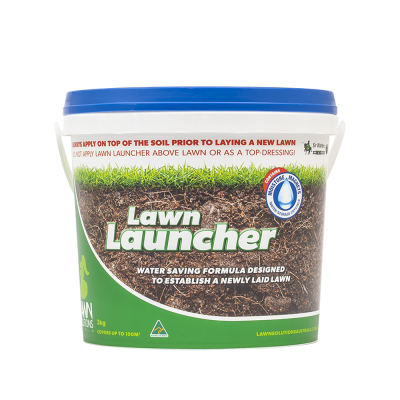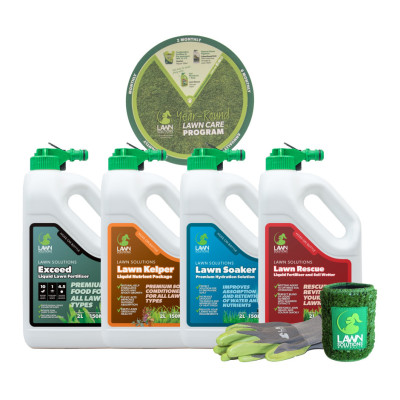How to remove invasive grasses from your lawn
Kikuyu and couch are the number one suspects when it comes to lawn invasion, they are fast growing and have fine seeds that can spread very easily. Kikuyu is more aggressive in nature than any other lawn variety, so it’s potential to take over is very high. Kikuyu spreads by both runners and by seed.
Skip to: Pulling invasive grasses out by hand, Spraying invasive grasses with a non-selective herbicide, How to remove kikuyu in couch? How to remove nutgrass? How to remove onion grass? How to remove summer grass, crabgrass, and paspalum? How to remove winter grass?
Invasion can occur a number of different ways:
- Your original lawn and soil not being sprayed out and killed off properly and re-emerging from seeds or runners.
- Grass seeds that have travelled to your lawn by the wind, on pets, in bird droppings, on clothing or shoes, or from a neighbouring lawn.
Some lawns, like DNA Certified Sir Walter, have a growth habit that will usually crowd out most weeds and unwanted grasses. Occasionally these undesirables will invade, especially if your lawn hasn’t been well maintained. But it’s important not to confuse your weeds with your grasses. Weeds are generally soft round plants whereas unwanted grasses can include things like paspalum, kikuyu and couch, depending on what lawn variety you have.
Unfortunately in most cases, many warm season grasses are unable to be selectively treated in other grasses. So there are no specific herbicides that can be recommended to blanket treat a lawn without harming the grass you intend to keep as well. But there are other ways to handle the infestation.
Pull it out by hand
If the invading area is only small the most effective way to remove an unwanted grass variety is to pull it out carefully by hand. You can also chip them out with a mattock or a garden spade. This method can be time consuming if the invading grass has spread considerably. But through regular hand weeding, ensuring you remove as much as possible and all of the roots, you should begin to get on top of the infestation. A healthy lawn should also help to thicken and choke out more emergence, so regular lawn care activities will also be important for success.

Spray with a non-selective herbicide
The only other way to remove kikuyu or couch from a buffalo, fescue, rye or bluegrass lawn is through the application of a non-selective herbicide like glyphosate (Round Up).
By using a small paint brush or weed wand carefully brush the leaves of the invading grass. Please be aware that glyphosate is a non-selective herbicide and be careful to only touch the invading turf variety and not your lawn, as it will die also if it comes into contact with the herbicide. Invading grasses like kikuyu, tend to grower quicker and taller, so the best time isolate the grass is to do so when there is a little bit of length to the lawn. This may also allow for careful ‘wick wiping’ of the invading grass if there is extensive contamination across the whole lawn area.
How to remove kikuyu in couch
For a couch lawn that is suffering from an invasion of kikuyu, there are some selective herbicide options that will treat kikuyu but not the couch. There is a commercially available herbicide called Monument, which can be used to suppress Kikuyu from couch lawns. Monument Herbicide is the broadest spectrum selective post-emergence herbicide for turf. Monument is highly effective in controlling Poa annua, Ryegrass, Kikuyu, Sedges and a wide spectrum of broadleaf weeds.
Monument Liquid Herbicide is safe to use on – Common Couch, Hybrid Couch, QLD Blue Couch and Zoysia – DO NOT USE on Kikuyu or Buffalo.

How to remove Nutgrass
Nutgrass is another type of grass weed that can invade your lawn. With Nutgrass it is particularly noxious due to its underground bulb. Because of these underground bulbs, it is best to avoid pulling them out by hand and use a specific herbicide like Lawn Solutions Sedge Control for removal.

How to remove Onion Grass
Onion Grass is another noxious grassy weed, which too has an underground bulb. Eradicating onion weed starts with removing as many of the plants as possible. Do not try to pull the plant out of the ground or shake excess dirt back off into the hole or compost. The small bulblets tend to pull away from the mother plant when pulled, which leaves more bulbs in the ground that will rapidly grow. If possible, dig the weed-clump out of the ground with a spade or a trowel, and throw the entire clump away. If you have an extensive problem, Onion weed and onion grass can be treated with a selective herbicide called ProForce Duke 10WG Herbicide.

How to remove Summer Grass, Crabgrass and Paspalum
Summer Grass, Crabgrass and Paspalum are annual weeds which will start to appear in spring and summer as the temperatures begin to rise back up. If there is only a small amount of these weeds growing, the best way to remove the weed is to pull it out by hand. If there is an infestation across the lawn, we recommend using a herbicide with DSMA as the active, like David Greys 500ml Crab Grass and Clover Killer Selective Herbicide. Please note herbicides containing DSMA as the active ingredient are not safe for use on kikuyu, buffalo lawns, and QLD blue couch. Summer Grass and Crabgrass can also be prevented with the use of a pre emergent herbicide like Oxafert and Barricade.

Removing Winter Grass from your lawn
Winter Grass is a pesky annual grass that will start to grow and germinate in autumn as the temperatures start to cool. This weed will grow in small tufts with distinctive triangular shaped seed heads. To remove Winter Grass, you can either remove it by hand, or use a specific Winter Grass herbicide like Amgrow Winter Grass Killer. Winter Grass can also be prevented by the use of a pre emergent herbicide like Oxafert in mid to late autumn, or just before the temperatures cool in your region.



